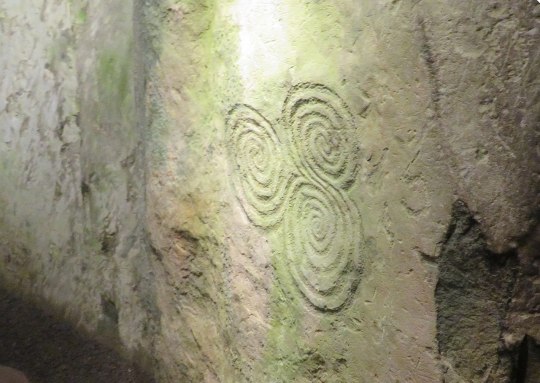#Newgrange
Text

Grianstad shona daoibh!
In Ireland, the Winter Solstice is often associated with the Newgrange passage tomb in County Meath. Each year, as the sun rises on the Solstice, it aligns perfectly with tomb to illuminate the passage within.
Lots of historical, scientific and even crazy (I’m looking at you Ancient Aliens) theories exist as to why this occurs, but there is also some stories within our mythology associated with the event, including the Dagda’s affair with the Goddess Boann.
The Dagda was thought to be an Irish god of fertility and strength. A wife of one of his aides, Boann, a goddess of the River Boyne, was particularly entranced, and the couple soon began a clandestine affair. Affairs don’t stay secret when a god of fertility is involved, and Boann quickly fell pregnant around springtime.
Boann resided at Newgrange, and when her husband left for a hunting trip, the Dagda cast a spell to make the sun standstill for nine months and pause time. Boann carried her baby to term and eventually gave birth to Aengus, a god of youth and love. Despite it now being Winter, on Elcmar’s return he felt as if only a day had passed and the affair went unnoticed. That is until one day, when an adult Aengus would eventually arrive to duel Elcmar for Newgrange, which he deemed his birthright.
#irish mythology#artists on tumblr#irish folklore#newgrange#winter solstice#aengus#the Dagda#Boann#celtic polytheism#amylouioc art#my art#celtic mythology#fantasy illustration
235 notes
·
View notes
Text

Newgrange in Ireland - 5,200 year old passage tomb.
499 notes
·
View notes
Text

Smut War Fic: Exit Wound
Well, this wasn't a war I was going to sit out. Please enjoy my 6th fic. First attempt at smut, but as you have already seen from my TrAuMa meme, it also has a lot of angst in it. I hope you enjoy it x
Rating: Explicit
CW/TW:
These are expanded upon further in the summary if you'd like to also read that for context, but take care of yourself :)
- Demon in Snake Form / Goddess in Human Form Sexual Encounter. Both are aware of what the other is, and both can consent
- Slight dubcon due to magic, feeling highly connected to someone and a sense of not being in control as a result, more so due to an inherent primal instrinct. All beings are acting on free will and are able to consent for the smut bits
- In the epilogue, a character describes a murder he witnesses without gory detail (the victim is not Aziraphale or Crowley). The nature of the murder is patriarchal and of spiritual colonisation in nature, but there is no sexual assault / motive. The fic can be read without the epilogue if you're curious but want to skip this subject.
-Angst ending
- Snake bite, snake sex and descriptions that could trigger claustrophobia
Summary
Hell sends Crowley to 5th Century Ireland, much to his chagrin, to investigate a mysterious source of power. Uphill from a deep rainforest he finds an ancient structure with something far more ancient and far more powerful than any blessing or curse he’d seen before.
This is a story of love, of loss, coming home, and everything that never was. Join me for a re-telling of an Irish Celtic Myth that has been sanitised and long-forgotten. Taking place in one hundred years into Early Christian Ireland, it weaves themes of spiritual colonisation with the ineffability of a great plan and the parts of us that are never truly lost.
But this is a smut war - and you can expect a sexy divine being, human sex and snake sex; not just hemi-penes, but hemi-clitorae! Sex magic rituals being used as a sensual tool for transformation and rebirth; and plenty of vulva pleasure and gratification.
There are three (because it’s a magic number) sexual configurations - demon in snake form / Goddess in human form, Snake / Snake, Human / Human. That culminates in a healing and surrendering love.
The epilogue features angst with an unhappy ending. As you can imagine, the resistance to Christianity did not end well for the Irish Pagans. In the epilogue, one character describes witnessing the murder (no sexual assault) of another. But the story stands well enough on its own without the epilogue if you want to skip this part.
5,014 word count
Excerpt:
“I’ve been waiting for you, Crowley.”
“Who are you?” Crowley hissed. His aggressive exterior betraying the powerlessness he felt to draw nearer.
“I am many things, Crowley. I am one of many mothers; both death and rebirth. I am the inhale and the exhale; the dawn that rises after the cold, hard winter; I bring joy and I am feared; and soon, none will remember…”
Crowley inched forward, concertina twinings marking the dirt, barely sensing the heat of the fire in the woman’s lure.
“Your name!” He growled insistently.
“You already know it, Crowley. Look deep inside you, my beloved serpent,” was her soft response with kind eyes. Crowley flicked his tongue at the fingers of her extended palm. The woman’s skin was steeped in the essence of her words; the taste of finely plucked sycamore seeds carried lovingly by the wind to pre-destined soils. Tears doomed never to fall filled Crowley’s heart as the thread that connected him to this woman tugged him closer on her arm; the most he had ever touched or been touched by a human in his snake-form. Only she wasn’t human, was she? A foreign name Crowley had always known moved from the back of his mouth to dance on his tongue.
“Caoira…”
Green eyes smiled through tears at the demon’s whisper.
“Yes my dear. It’s me. I’m so glad you’re here.”
Crowley’s thought-form longed to ask questions. About knowledge, that began before words; curiosity, that existed before symbols; and meaning, established before sounds. But he had already found his answer in her eyes. Another Almighty; new and much more ancient. A Goddess.
Crowley’s body took over once again, unable to resist the draw to her. Climbing her arm and shoulders, his tongue could not cease flicking, planting forked kisses on her neck. Quivering, he meandered down her shoulder, elongating his form to drape around her. Powerless over the compulsion to place his chin on every part of her body, Crowley’s tail vibrated in her lap and Caoira breathed sighs of joy in his scaled ministrations.
Fingers that had borne the very wells of the earth stroked the obsidian pearls of Crowley’s back, before coming to delicately caress the ridges of his snout and brow. Crowley flinched in the touch, haunted by memories of the fall; of centuries spent curled around the cooling magma of igneous rock. Curled around any form of connection to replace the Almighty’s as his wings burned.
Coos of Caoira’s attunement honeyed Crowley’s ears, and with no way of crying, sweating or spitting it out; his serpent-form became fevered with fury for what had happened to him. His body flailed in twisted, hissing reverberations in the centre of the Goddess’s crossed legs. In his uncontrolled anguish, Crowley felt his jaw unhinge and his fangs hook into Caoira's thighs, breaking her skin. Punishment for his other mother, who had placed a similar hook in his heart only to cut the cord in the end. This time, he was never letting go.
Read more on AO3
Thank you:
Goskiagarkowska2 on pixabay for the image. A huge thank you to @sohoscribblers who have been amazing friends since I joined their group. Big thanks to @azeutreciathewicked @aidaran-alha @playdohangel and @rhosmeinir for the Betas x
#good omens smut#ineffable smut war#good omens#crowley and aziraphale#because smut without angst feels like nothing#celtic mythology#good omens au#irish paganism#newgrange#good omens fanfiction
44 notes
·
View notes
Text
Ach-To and Irish Archaeology
The sequels were my entry into Star Wars and I never would have gone to see The Force Awakens if I wasn't an archaeology nerd.
During the production of Episode VII, a decent number of people with an interest in our archaeological heritage here in Ireland were quite worried about the impact of filming on one of our only two UNESCO World Heritage Sites, the island known as Skellig Michael down off the coast of Kerry.
I went to the film to see if any potential damage was worth it, or if they'd do something unspeakably stupid with it in-universe. I wanted to see if it was respected.
And holy hell I was NOT disappointed. I think I walked out of TFA sniffling to myself about how beautiful the Skellig looked and how it seemed like its use as a location was not just respectful but heavily inspired by its real history.
See, Skellig Michael was a monastic hermitage established at a point when Christianity was so new that the man who ordered its founding sometime in the first century CE was himself ordained by the Apostle Paul. The fellah from the Bible who harassed all and sundry with his letters, THAT Apostle Paul. This is how old a Christian site the Skellig is. It predates St. Patrick by at the very least two hundred years.
The steps we watch Rey climb were originally cut NEARLY TWO THOUSAND YEARS AGO. They have been reworked and repaired many many times since, of course. Still, the path the camera follows Daisy Ridley up is as much an ancient path built by the founders of a faith in real life as it is in the movies.
A hermitage was a place where monks went to live lives of solitude and asceticism so as better to achieve wisdom. The practice is common to many of the major world religions, including the myriad East Asian faiths which inspired the fictional Jedi.
It is said that the hermitage and monastery were originally built with the purpose of housing mystical texts belonging to the Essanes, one of the sects of Second Temple Judaism which influenced some of the doctrines of Christianity. They also, according to what I have read, characterised good and evil as 'light' and 'darkness' and were celibate.
As such, the use of the island in TFA and TLJ does not merely respect Skellig Michael's history, it honours it. It is framed as somewhere ancient and sacred, which it is. It is framed as a place where a mystic goes to live on his own surrounded by nature that is at once punishing and sublime, which of course it was. It shown to be a place established to protect texts written at the establishment of a faith, which it may well have been.
This level of genuine respect for my cultural heritage by Rian Johnson in particular is astonishing. I don't think anyone from outside the US ever really trusts Americans not to treat our built history like it's Disneyland. Much of the incorporation of the Skellig's real past into a fictional galactic history occurs in TLJ, which is why I'm giving Rian so much credit.
It's Luke's death scene which makes the honouring of Irish archaeological history most apparent though.
Johnson takes the archaeological iconography back a further three thousand years for his final tribute to my culture's beautiful historical temples. This time, he incorporates neolithic passage tomb imagery, specifically that of Newgrange, which is up the country from the Skellig.
I think if you understand what the image represents then it makes a deeply emotional scene even more resonant.
The scene I'm referring to is Luke's death.
As he looks to the horizon, to the suns, we view him from the interior of the First Jedi Temple. The sunset aligns with the passageway into the ancient sanctuary, illuminating it as he becomes one with the Force.

As for Newgrange, every year during the Winter Solstice it aligns with the sunrise. The coldest, darkest, wettest, most miserable time of the year on a North Atlantic island where it is often cold, wet, and miserable even in the summer. And the sun comes up even then, and on a cloudless morning a beam of sunlight travels down the corridor and illuminates the chamber inside the mound.
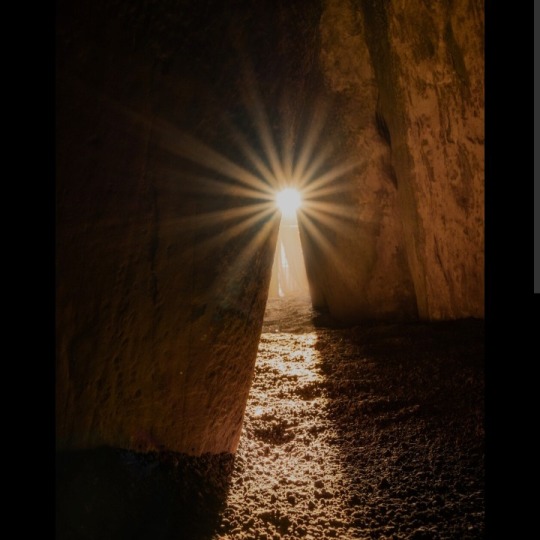
You guys can see this, right? The similarity of the images? The line of light on the floor?
Luke's death scene is beautiful but I think it's a thousand times more moving with this visual context. Luke's sequel arc isn't merely populated by a lore and iconography that honour the place where the end of his story was filmed, I think that incorporation of that history and mythology honours Luke.
We don't know for sure what the Neolithic people believed, religion-wise. We know next to nothing about their rituals. We know that there were ashes laid to rest at Newgrange. There is some speculation that the idea was that the sun coming into the place that kept those ashes brought the spirits of those deceased people over to the other side.
It's also almost impossible not to interpret the sunlight coming into Newgrange as an extraordinary expression of hope. If you know this climate, at this latitude, you know how horrible the winter is. We don't even have the benefit of crispy-snowwy sunlit days. It's grey and it's dark and it's often wet. And every single year the earth tilts back and the days get long again.
The cycle ends and begins again. Death and rebirth. And hope, like the sun, which though unseen will always return. And so we make it through the winter, and through the night.
As it transpired the worries about the impact of the Star Wars Sequels upon Skellig Michael were unfounded. There was no damage caused that visitors wouldn't have also caused. There also wasn't a large uptick in people wanting to visit because of its status as a SW location, in part I think because the sequels just aren't that beloved.
But they're beloved to me, in no small part because of the way they treated a built heritage very dear to my heart. I think they deserve respect for that at the least.
#star wars meta#ach-to#irish history#Irish Archaeology#first jedi temple#skellig michael#newgrange#luke skywalker#the last jedi#early christianity#neolithic#historical parallels in star wars#star wars and history#star wars and mythology#star wars and archaeology
128 notes
·
View notes
Text
The Turoe Stone
The Turoe Stone sculpture is a masterpiece of Irish Iron Age art and normally stands in the village of Bullaun near Loughrea, Co Galway. It had been moved in the 1850s from its original location near the Rath of Feerwore, an Iron Age ring-fort structure, at nearby Kiltullagh. The stone is currently off site and in the hands of the Office of Public Works for essential remedial work and unavailable…
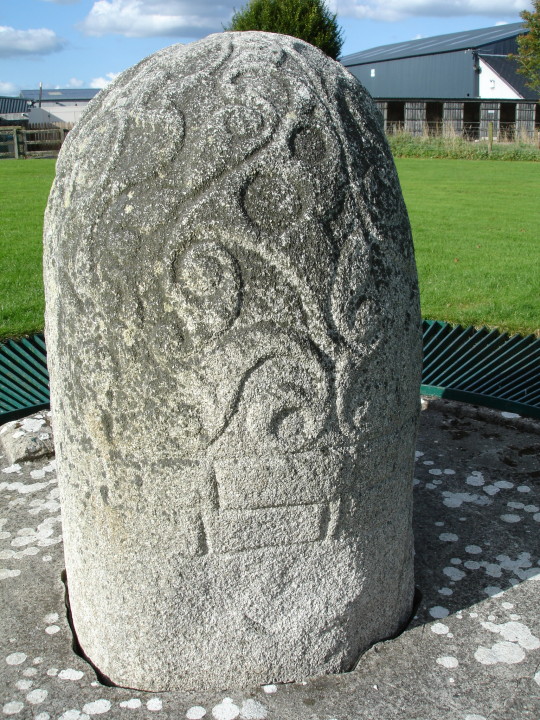
View On WordPress
#Ancient Celts#Archeologists#Bullaun#Celtic Art#Cloch an Tuair Rua#Co. Galway#France#Greece#Ireland#Iron Age#La Téne#Legend of the Celtic Stone#Loughrea#Newgrange#Sculpture#The Stone of the Red Pasture#The Turoe StoneEdit "The Turoe Stone"
20 notes
·
View notes
Text
Ok... real talk... why is Stonehenge held up as the measuring stick for old things when Newgrange predates it by 1,000 years?
Newgrange also predates the Great Pyramids by 500 years...
just saying...
74 notes
·
View notes
Text
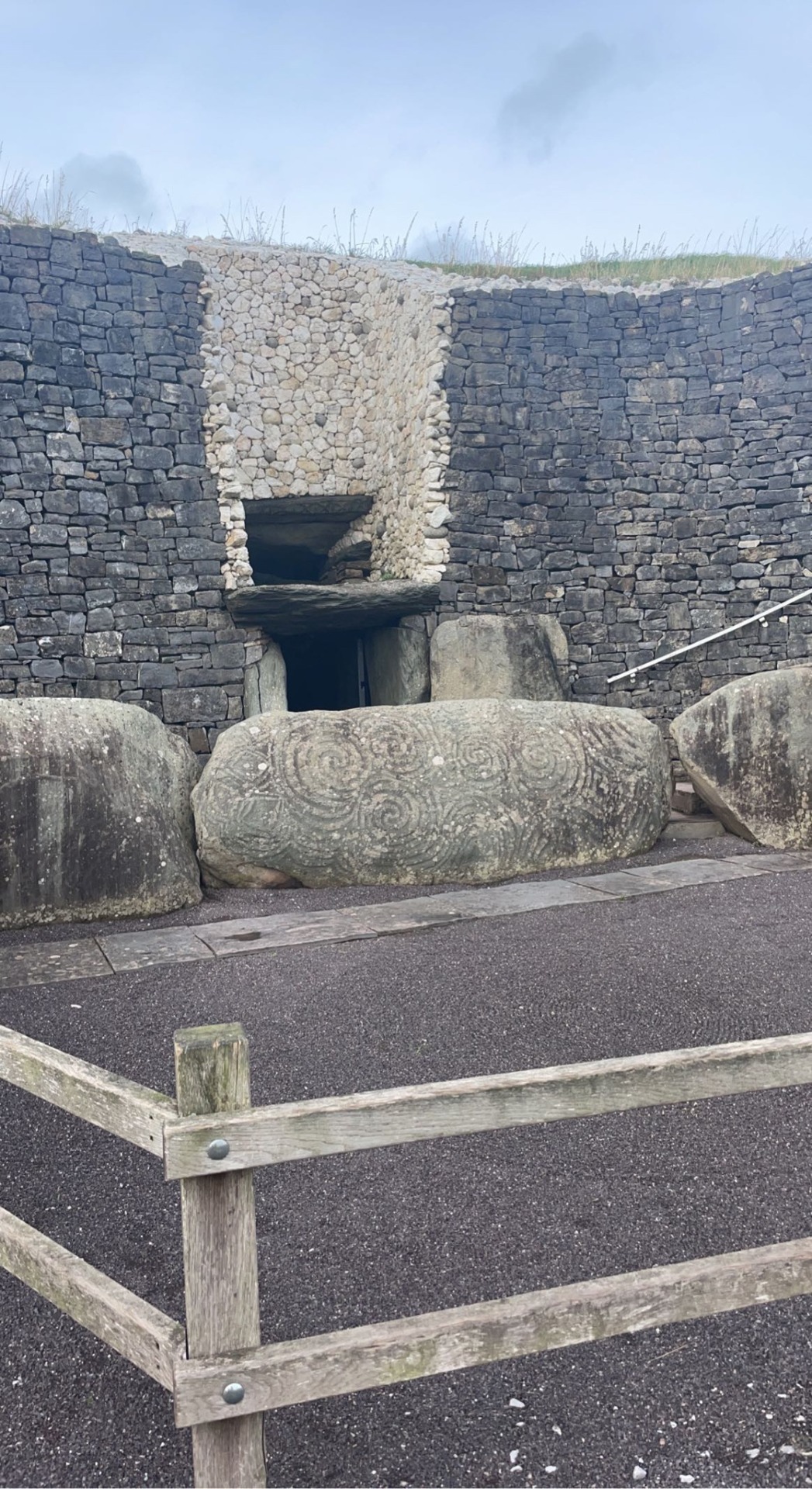


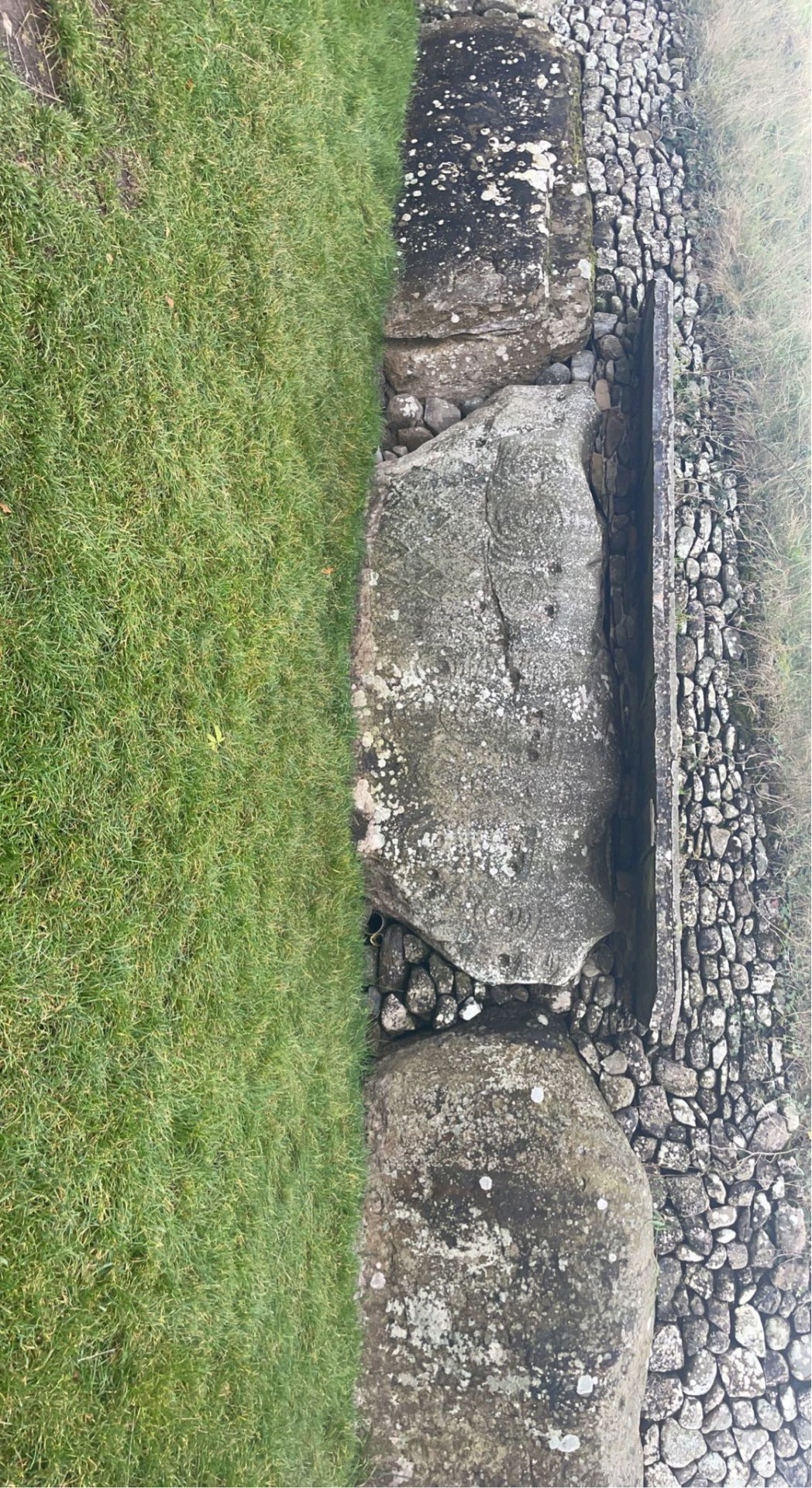


Artist research: Newgrange stone carvings.
Although I’ve no idea who produced the stone carvings on newgrange they’ve always fascinated me. I absolutely adore Neolithic Irish history. My school brought us to Newgrange and Knowth in 6th year. So all these photos I took myself. The entrance stone is fascinating as they’re is so many different symbols. The craftsmanship is spectacular for its time and they obviously had a very steady hand. The meaning behind it is unknown whether it be about the marriage between the sun and earth, a calendar, a woman’s body, the number of body’s found inside, the river that’s near by, many others or it could have just been people experimenting like I have been doing with my clay. Kerbstone 52 is also fascinating as it takes on new patterns such as the lozenges which could represent months or weeks. I’ve also included a decorated stone from Knowth.
To me personally I love visiting Newgrange as it’s so interesting to see the light come through. With this being said I have to say I prefer Knowth, I think Knowth looks more like what the passage tombs would have looked like in the day and Newgrange is now more stylised. It breaks my heart seeing the graffiti inside from many moons ago that take away from the original carvings. I love the mystery behind the standing stones that could have been carved but years of weathering have gotten rid of them.
At Knowth, they’ve made a new interpretation centre where you get to create rubbings of the carvings. I included mine! It didn’t turn out great but you can really get a feel for the carvings. They also have the tools they used and you can try carve a stone there. Which is really hard to do and you gain so much respect for the people who carved these stones as I barely lasted 5 minutes doing it.
It amazes me how they were able to creat such patterns and geometric patterns in these stones and I can’t imagine how long they must of taken. I’d imagine people spent their lives craving the stones and this implies that the bodies inside must have been of high status.
Many passage tombs like Newgrange can be found around the country. Many don’t have patterns on them but this isn’t to say they never had them. Weathering could have gotten rid of these. There are so many passage tombs and court-cairns in Sligo that I like to visit anytime I’m up there, they have become part of my daily routine as I feel such a connection to them! An other one which is closer to home is on the border between Tipp and Limerick, which I highly recommend as you can walk inside of it and see the structure of it. (And it’s completely free!!). I’ve been lucky enough to have a court cairn on my land as well as a souterrain (which is a passage underground).
20 notes
·
View notes
Text
Okay, so, I was recently listening to an album by Celtic Woman. Wonderful music group, one of my favorites.
The lyrics of one of the songs reminded me of Tears of the Kingdom, and maybe Breath of the Wild by extension.
The song is Newgrange
The specific line ‘Forgotten is the race that no one knows’, makes me think of the Zonai.
#the legend of zelda#tears of the kingdom#breath of the wild#celtic woman#newgrange#song lyrics#Zonai
15 notes
·
View notes
Text
In County Meath, Ireland there is a tomb like no other. Older than Stonehenge and larger than a football field, it has taught us how the ancients not just buried but also communicated with the dead.
57 notes
·
View notes
Text
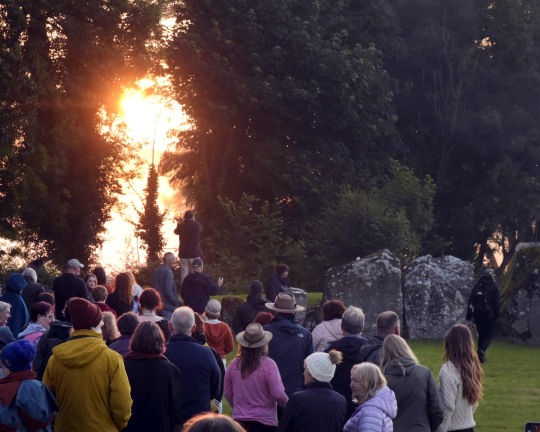
Summer Soltice in Grange Stone Circle near Lough Gur, Co Limerick on the 21st June 2023
#irish mythology#limerick#summer solstice#summer soul#druids#spiritualgrowth#spiritualhealing#spiritualguidance#spiritual knowledge#stone circle#newgrange#stonehedge#irish paganism
26 notes
·
View notes
Photo

Lugh
Lugh (également Lugus ou Lug) était l'un des dieux celtes les plus importants, en particulier en Irlande, et il représentait le soleil et la lumière. Bien qu'il ait été à l'origine une divinité omnisciente et clairvoyante, Lugh fut ensuite considéré comme un personnage historique, un grand guerrier et un héros de la culture irlandaise. Lugh porte souvent une épithète telle que Lugh Lámfada (ou Lámfhota), qui signifie long bras ou "de la longue main", en référence à ses prouesses avec les armes de jet, ou Lugh Samildánach, qui signifie "habile dans de nombreux arts et métiers". Il est un personnage important dans de nombreux récits de la mythologie irlandaise, où il mène la course des Tuatha Dé Danann à la victoire contre les marins Fomoires lors de la bataille de Mag Tuired. Lugh tue le borgne Balor à l'aide de sa lance ou fronde magique et instaure ainsi un règne de 40 ans de paix et de prospérité. Lugh ressemble à bien des égards au dieu celte Lugus, que les Romains décrivaient comme le Mercure gaulois.
Lire la suite...
15 notes
·
View notes
Photo

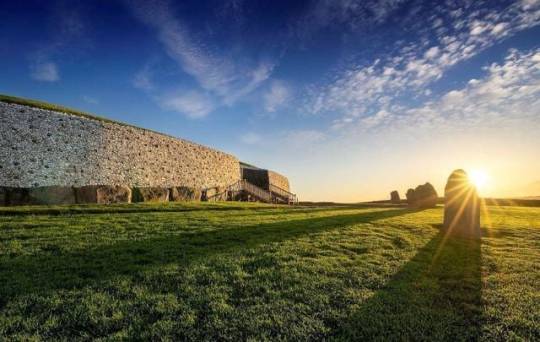
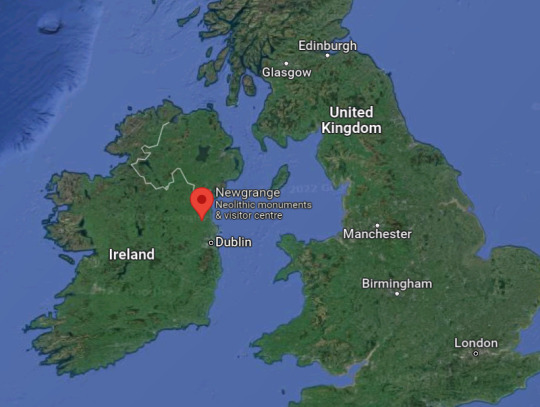
photos: The Winter Solstice at Newgrange in County Meath. (Ireland's Content Pool). sourced from Irish Central.
The Winter Solstice is an astronomical phenomenon that marks the shortest day and the longest night of the year. In the Northern Hemisphere, the Winter Solstice occurs on December 21 or 22, when the sun shines directly over the tropic of Capricorn. It is the basis for many religious holidays around the world.
At sunrise on the solstice, direct sunlight can enter the Newgrange monument—a large 5,000-year-old (older than Stonehenge and the Great Pyramid of Giza) Neolithic tomb structure built north of Dublin—through a specially contrived small opening above the entrance to illuminate the entry chamber for a short period of 17 minutes. The monument is believed to be a place of worship for a “Cult of the Dead.”
#winter solstice#solstice#newgrange#newgrange monument#astronomy#astrology#december 21#ireland#county meath#stone age#monument#world heritage site#tomb#temple#neolithic#megalithic#christmas#new year#winter#New Grange
63 notes
·
View notes
Text
Yule
December 21st marks both the Winter Solstice and the beginning of Yule, a winter festival historically celebrated by Germanic and Scandinavian people with roots in both Norse and Celtic cultures. The word Yule is thought to derive from Jól or Jólnir, Old Norse names for the god Odin who led the Wild Hunt for the Yule boar. At mid-winter, Norsemen lit bonfires, told stories, and drank sweet ale. Yuletide festivities took place over three days and involved feasting, drinking to excess, and singing with good cheer. During Yuletide, no work was done, and quarrels or fights were set aside.
Ancient people were hunters and spent most of their time outdoors, so the marking of the changing seasons was of particular importance. In ancient Rome, the festival of Saturnalia ran for seven days from the 17th of December to celebrate the rebirth of the year. It was a time when the ordinary rules of society were reversed. Men dressed as women and masters dressed as servants. The festival involved decorating houses with greenery, lighting candles, holding processions, and giving presents.
The Winter Solstice falls on December 21st, the shortest day and longest night of the year, and was celebrated in Pagan cultures long before the arrival of Christianity. Yule depicts several Pagan beliefs, including the Holly King handing over power to the Oak King, ushering in a new season of light. The Druids (Celtic priests) cut the mistletoe that grew on the oak tree and gave it as a blessing. Oaks were seen as sacred, and the winter fruit of the mistletoe was a symbol of life in the dark winter months.
The 12 days between the Winter Solstice and the beginning of the next solar year were considered a sacred period, belonging neither to the old year nor the new year. These are the days of least sunlight and the Celts believed that the sun stood still for 12 days, so they lit fires to conquer the darkness, banish evil spirits, and bring luck for the coming year. The Druids are believed to have created the tradition of the yule log, the bough of a large tree that was kept burning continuously for the 12 days between the solstice and the start of the solar year.
Remnants of the previous year’s log were used to start the first fire of the new year to ensure continuity of good luck from year to year, from family to family, and from generation to generation. Gradually, the original Yuletide celebrations of three days were extended to span a full 12 days and nights, blending several other traditions, and immortalized by Shakespeare in Twelfth Night. Festivities were associated with Wassailing, the wishing of good health in song, and the drinking of wassail, a warm alcoholic drink, which have become the Christmas traditions of carol-singing and the drinking of mulled wine punch.
In Wicca and other Neopagan traditions, Yule is celebrated at the Winter Solstice as the rebirth of the Great horned hunter god who is viewed as the newborn solstice sun. Stonehenge in England and Newgrange in Ireland are Neolithic structures associated with the solstices. Every year, a lucky few win the annual lottery to enter Newgrange on December 21st and witness the solstice sunrise flooding the inner chamber, a testament to the astronomical accuracy of our Neolithic ancestors.
The early Christian church chose to mark the birth of Jesus to coincide with Yule celebrations that traditionally occurred in midwinter including feasting, drinking, and animal sacrifice. The traditions of the Yule log, Yule goat, Yule boar (still reflected in the Christmas ham), and Yule singing have connections to pre-Christian Yule customs, which indicates the significance of the feast in pre-Christian times as the customs of Yule predate Christianity by thousands of years. Many of these customs are still followed today and incorporated into both Christian and secular Christmas celebrations, which traditionally span 12 days. Happy Yule, everyone!


7 notes
·
View notes
Text
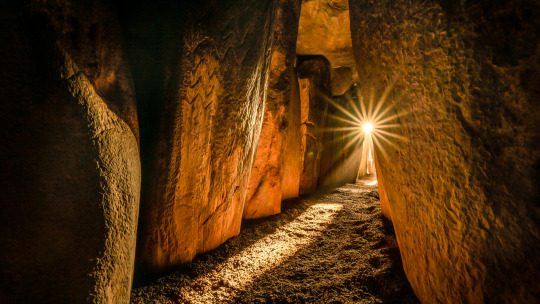
41 notes
·
View notes
Text
Winter Solstice
The earliest people on Earth knew that the sun’s path across the sky, the length of daylight, and the location of the sunrise and sunset all shifted in a regular way throughout the year. They built monuments such as Newgrange in Ireland, Stonehenge in England – or, for example, at Machu Picchu in Peru – to follow the sun’s yearly progress.
People gather at Newgrange for winter solstice dawn on…
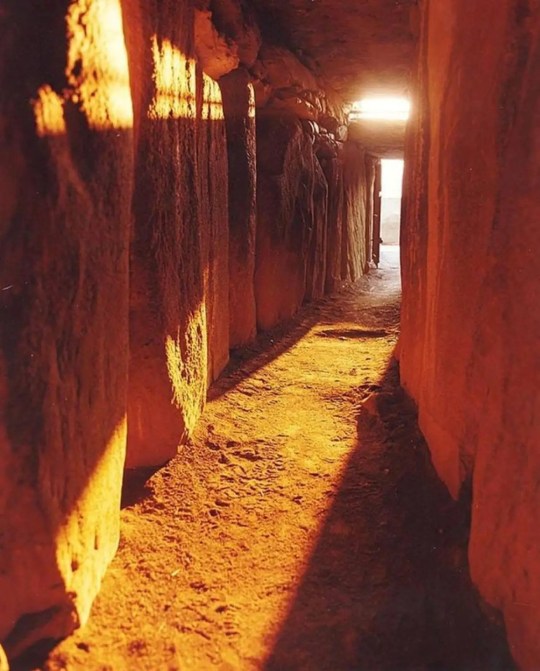
View On WordPress
#Brú na Bóinne#Co Meath#Daylight#Dowth#Machu Picchu#Newgrange#Peru#Stonehenge#Sunlight#Winter#Winter Solstice
25 notes
·
View notes
